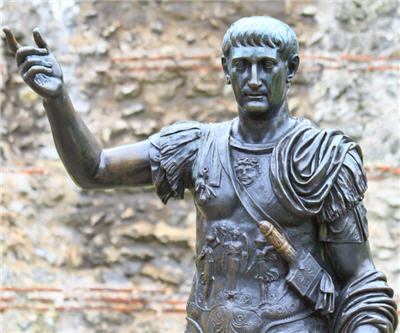Protests after Canadian firm receives go-ahead to mine gold near ancient Roman site

Interfax reports a few dozen people protested Tuesday outside Romania’s Culture Ministry in Bucharest against its approval of the archaeological discharge certificate for the Carnic Mountain, where extensive tunnels used by Roman miners during the rule of emperor Trajan (pictured) still exists.
Rosia Montana Gold Corporation, controlled by Canada’s Gabriel Resources which first obtained the concession in 1999, needed the permit for its project to establish an open-cast mine in the area believed to hold some 300 tonnes of gold, one of the largest deposits in Europe.
Gabriel Resources listed in Toronto added more than 18% at one point on Thursday last week when the permits were granted, but by the close on Tuesday had given up much of the gains, trading at $7.79, up 6.5% since the news broke. The little-traded company has a market capitalization of $2.72bn.
Mediafax reports the protesters said that, despite Rosia Montana Gold Corporation’s promise to fund the rehabilitation of the heritage in the area, there is a complete lack of transparency regarding the mining project, and anyway this “trade” is “unfair and unjustified.”
The Times Colonist reported on Friday The International Council for Monuments and Sites, one of the three formal advisory bodies to the World Heritage Committee, recently supported moves to put Rosia Montana on Romania’s tentative list for UNESCO, a first step in the long process towards a World Heritage listing.
There is archaeological evidence of gold mining in the ‘Golden Quadrilateral’ around Rosia Montana in Transylvania since the late Stone Age. Alburnus Maior was founded by the Romans during the rule of Trajan 98–117 AD as a mining town. The earliest reference to the town is on a wax tablet from 131 AD. Archaeologists have discovered ancient dwellings, necropolises, mine galleries, mining tools, 25 wax tablets and many inscriptions in Greek and Latin in the town.
{{ commodity.name }}
{{ post.title }}
{{ post.date }}


Comments